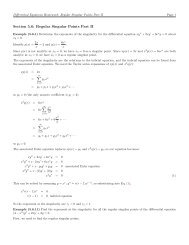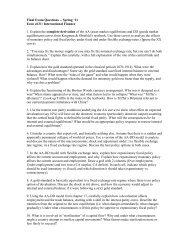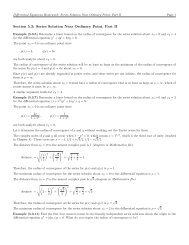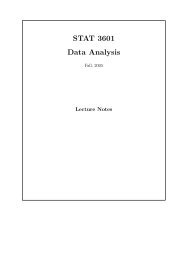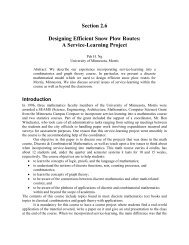Calculus I Homework: Linear Approximation and Differentials Page 1
Calculus I Homework: Linear Approximation and Differentials Page 1
Calculus I Homework: Linear Approximation and Differentials Page 1
You also want an ePaper? Increase the reach of your titles
YUMPU automatically turns print PDFs into web optimized ePapers that Google loves.
<strong>Calculus</strong> I <strong>Homework</strong>: <strong>Linear</strong> <strong>Approximation</strong> <strong>and</strong> <strong>Differentials</strong> <strong>Page</strong> 4<br />
We need the function <strong>and</strong> derivative evaluated at a = 0:<br />
f(x) = ln(1 + x)<br />
f(0) = ln 1<br />
= 0<br />
f ′ (x) =<br />
1<br />
1 + x<br />
f ′ (0) =<br />
1<br />
1 + 0<br />
= 1<br />
L(x) = f(a) + f ′ (a)(x − a)<br />
= f(0) + f ′ (0)(x − (0))<br />
= 0 + 1(x)<br />
= x<br />
We can now use the linearization to approximate the number.<br />
ln 1.07 = ln(1 + 0.07)<br />
= f(0.07)<br />
∼ L(0.07)<br />
= 0.07<br />
Here is a sketch of the situation.<br />
The blue line is the tangent line L(x), the red line is the function f(x), <strong>and</strong> the dot is where we evaluated to estimate<br />
ln 1.07.<br />
We could have chosen a different function <strong>and</strong> a, <strong>and</strong> still got the result. Consider the function f(x) = ln(1 − 7x), <strong>and</strong> we<br />
will choose a center of a = 0.<br />
Instructor: Barry McQuarrie Updated January 13, 2010





